- Home
- Nichole Christoff
The Kill Wire
The Kill Wire Read online
The Kill Wire is a work of fiction. Names, places, and incidents either are products of the author’s imagination or are used fictitiously. Any resemblance to actual events, locales, or persons, living or dead, is entirely coincidental.
An Alibi Ebook Original
Copyright © 2018 by Nichole Christoff
All rights reserved.
Published in the United States by Alibi, an imprint of Random House, a division of Penguin Random House LLC, New York.
ALIBI is a registered trademark and the ALIBI colophon is a trademark of Penguin Random House LLC.
Ebook ISBN 9780425285336
Cover design: Tatiana Sayig
Cover illustration: Shutterstock
randomhousebooks.com
v5.1
ep
Contents
Cover
Title Page
Copyright
Chapter 1
Chapter 2
Chapter 3
Chapter 4
Chapter 5
Chapter 6
Chapter 7
Chapter 8
Chapter 9
Chapter 10
Chapter 11
Chapter 12
Chapter 13
Chapter 14
Chapter 15
Chapter 16
Chapter 17
Chapter 18
Chapter 19
Chapter 20
Chapter 21
Chapter 22
Chapter 23
Chapter 24
Chapter 25
Chapter 26
Chapter 27
Chapter 28
Chapter 29
Chapter 30
Chapter 31
Chapter 32
Chapter 33
Chapter 34
Chapter 35
Chapter 36
Chapter 37
Chapter 38
Chapter 39
Chapter 40
Chapter 41
Chapter 42
Chapter 43
Dedication
Acknowledgments
By Nichole Christoff
About the Author
Chapter 1
Meet me, the final line of the text message read, on the edge of the compass.
And before I could click my iPhone closed, tuck it into my jacket pocket, and make up my mind to flag a cab to return to my Georgetown office, where I could bury myself under a mountain of reports and financial projections instead, the device trembled with an incoming message one more time.
Please, the sender implored, don’t say no.
The timeliness of the text and an abundance of caution prompted me to scan the street in a slow circle. No one, however, from the tourists on the double-decker buses trundling down Constitution Avenue to the food-truck drivers maneuvering into parking spaces along the National Mall in advance of the lunch rush, appeared to be overly interested in me as I stood on the street reading my messages. But being in the heart of Washington, DC, it was tough to tell.
Interns in bright spring dresses and ballet flats that snicked and clicked on the pavement, bike messengers with sinewy physiques, and a trio of male runners in high-tech sneakers buzzed by me. The runners were Secret Service types, or maybe even Navy SEALs. They were so fit, reality TV stars would do almost anything to build surreal bodies like theirs—except, of course, sign up to serve their country. None of them so much as glanced my way, however, and in the buildings clustered close to the avenue, I didn’t pick out binoculars reflecting the thin sunshine in any of the myriad windows, or even a stuffed shirt wearing a starched collar and necktie with his face pressed to the glass to peer down at me. Over my shoulder stood the monolith that was National Archives, where my client, Chief Conservator Wendy Jessup, had delivered me to a side exit after our meeting, but even she had disappeared into the bowels of the building once again.
Wendy, an archivist by trade, had wanted me to meet with her at work—and away from her home, where she’d suspected the healthcare worker she’d hired to take care of her Alzheimer’s-afflicted mother had really been using Wendy’s house to run a brisk business selling OxyContin to strangers like the place was some kind of twenty-first-century opium den. I’d brought her relatively good news. Each afternoon, after school, the nurse’s aide had been busing her eleven-year-old kid—and her kid’s friends—from their high-crime neighborhood to Wendy’s Van Ness bungalow. All the late-day traffic into and out of the house, which Wendy’s neighbors had observed and worried her about, was nothing more than grateful parents stopping by to pick up their kids before Wendy got home—and from what I’d been able to determine when I’d weaseled my way inside, posing as the city’s friendliest radiator inspector, Wendy’s forgetful mother had loved the company of all those young people. That was no small thing, given that a disease like Alzheimer’s shuts down a person’s cognitive and social functions and isolates them from the rest of the world.
Being an archivist, Wendy had a knack for categorizing people, places, and things. So as soon as I’d told her what was truly happening at her house, she’d seen all the good in what had appeared to be bad. But not everything—or everyone—fell firmly into one of those two categories. And that, as I’d discovered just three short weeks ago, included me.
In my pocket, my phone vibrated again.
I didn’t bother to look at it this time. Instead, I turned toward the Smithsonian Institution’s National Museum of Natural History directly across the street—and set off to meet the man who’d asked me to join him at the edge of the compass.
The Natural History building’s broad granite steps swept wide from Constitution Avenue, and I made quick work of them, trotting to the top. I approached the menacing metal detectors inside the museum’s heavy bronze doors and joined the line shuffling past a plain oak table. There, a gaggle of junior high students noisily emptied their backpacks under the auspices of teachers and watchful security guards. It may’ve been early March, and winter, though soft along the Mid-Atlantic, had yet to turn the corner into warmer weather, but school systems traditionally picked a week during this month to close for vacation and called it Spring Break anyway. Consequently, at some point in their academic lives, practically every kid in America got shipped to the nation’s capital for their school’s annual Spring Break class trip. As a result, the kids at the security checkpoint weren’t the only ones clamoring to take in the sights and sounds of Washington, DC—or even of the Natural History Museum.
Under the dome of the main hall’s rotunda, screeching children, weary parents, and frustrated chaperones hustled and bustled while the great African Elephant, preserved and brought to the museum in 1959 and weighing in at twelve tons, towered over them all, his trunk raised in salutation. Kids rocketed down the corridor toward the National Fossil Hall. Others stampeded into the museum’s IMAX theater. In my estimation, however, the best exhibits could be found upstairs, tucked into the wide wing that housed minerals and gemstones. Some of those specimens probably required a forklift to shift. But each offered glorious examples of fracture pattern and fluorescence, structure and saturation. In fact, some of the smaller stones featured colors so vibrant and so translucent, I was tempted to pluck them from their showcases and pop them into my mouth like candy at every visit.
The oddly ethereal Hope Diamond held court in that wing, too. Once privately owned, it now belonged to the people of an entire nation. And if its fabled curse was indeed transferrable, my fellow Americans and I just might be in trouble.
But I wouldn’t be visiting the diamond today, or the other gems, either. Instead, I stuck to the stone circle—a compass actually—embedded in the great hall’s floor. Revealed after a 2015 renovation, the inlay picked out the cardinal directions
, and on the south side of the hall, beneath the glorious rotunda, two docents attempted to organize a flock of little kids.
These kids were much younger than the others rampaging through the building. They were kindergarteners, judging by their size, or they topped out in first grade at most. And when one docent whipped out a hand puppet, the children knew what to do. All sixteen of them dropped to the stone floor to sit cross-legged in a ragged semicircle for a casual quiz about everything they’d seen and heard at the museum that morning.
A half dozen young parents hovered behind the ring of children, efficient-looking moms with highlights in their styled hair and dads wearing skinny jeans with their blazers. And then there was another man. He was a little older than the early-thirty-somethings around him, and probably a little wiser, too.
With black hair, hard eyes, and a disciplined body, this man could make a heavenly angel do a double take—and daydream about earthly delights. Usually, he wore a suit. But unlike the others in the group, on this day he’d dressed more for functionality than fashion. And I doubted his T-shirt, cargo pants, or well-kept boots bore any fancy labels. Neither would the denim jacket that camouflaged the handgun holstered at his hip.
All in all, he looked like trouble, even in the middle of the museum.
But that was a vast improvement over the last time I’d seen him.
That last time had been on the doorstep of his modest condo in Annandale. I’d arrived bearing a quart of chicken noodle soup and a bottle of his favorite scotch. But I hadn’t accepted his invitation to stay, or even stepped inside. He hadn’t been in shape to host company, though he’d been reticent to admit it. He’d leaned heavily on a cane, limping on a leg swollen with the aftereffects of snakebite, and in a fair amount of pain, no matter how much he’d tried to hide it—and those dead giveaways had been all my fault.
Today, he was more himself than ever. But there was an unusual edge to him. A tension. And, as if his proximity to all those little tykes made him nervous, he kept his arms tightly folded across his chest. But he never shifted his attention from the children.
I crossed the echoing floor to join him.
“Times must be tough at the Drug Enforcement Administration,” I said, “since you’ve taken up babysitting on a Tuesday morning.”
Special Agent Marc Sandoval’s gaze left the kids—but only for a moment. Still, that moment was long enough for him to take in my high ponytail, navy-blue leather blazer, charcoal trousers, and handmade kitten heels that were just pointy enough to mean business without slowing me down anytime I had to hit the bricks.
Lastly, Marc’s hot, black eyes locked onto my gray ones. But they didn’t linger long. His focus snapped back to the children.
“I wasn’t sure you’d show,” he said, “since you stopped returning my calls two weeks ago.”
“That’s not exactly accurate,” I reminded him. “And I think you know it.”
Marc, in fact, had stopped calling me nine days before. Consequently, there hadn’t been any phone calls to return. But I didn’t want him to know I’d been keeping count.
I’d met Marc last October when I’d made the mistake of stepping foot in one of his cases. Of course, that hadn’t been my intention at the time. As a private-eye-turned-security-specialist with a long list of high-risk, high-profile clients, I’d been more intent on keeping a crooked official with the Federal Drug Administration out of the pockets of a pharmaceutical company’s honest CEO. But our paths had crossed again when I’d taken on a case to help the soldier who was near and dear to my heart. And before my work was done, Marc had made it very clear he wanted to spend more time with me—in his bed or mine.
But I wasn’t single. At least, I hadn’t been then. Now I wasn’t sure what I was.
Marc said, “What’re you doing this week, babe?”
I hesitated, unsure of whether he was asking about my commitments in a professional capacity—or a personal one.
I decided to play it safe.
“I’ve got a few entries on my calendar.” I didn’t tell him I was in the middle of vetting nannies for that Broadway star who wrote that hit musical. Or that a particular embassy had hired me for an anti-electronic-surveillance sweep of three properties they planned to buy in Maryland. “But I just wrapped up a case this morning.”
“Sounds like you’re keeping busy.”
“Busy pays the bills,” I replied.
Busy also kept me from dwelling on recent events—and my own private shortcomings.
I said, “I’ve also got a professional quarterback who wants two bodyguards with him at all times.”
I didn’t mention that the team’s insurance company just doubled the multimillion-dollar policy on the player’s throwing arm—and that he suspected somebody wanted a payout to shore up the owner’s failing financial situation.
“A few of my guys are handling that, though.”
“Ah, the associates at Sinclair and Associates. I guess the boss lady can’t be expected to fit everything into her workday.”
That was true of anybody.
But I didn’t like the way Marc made it sound.
“Well, this boss lady is also taking the train to New York tomorrow.” I had a meeting with some advertising executives who weren’t fans of the way their best ideas keep migrating from their drawing boards to the ads the competition created. But then I drilled down to what I really wanted to say. “What’s with the curiosity about my schedule?”
Marc answered my question with a question of his own.
“What would you make of a mother who dropped off her son, but didn’t return to pick him up?”
“That depends,” I replied carefully. “Did someone T-bone her car at the intersection across from the elementary school? Or did she hop on a plane for a wild weekend in Vegas?”
“I don’t know.”
Marc shoved his quick hands into his jacket pockets. One kid, I noticed, seemed to draw his attention more often than the rest. He was a little boy with black hair, the darkest of blue jeans, and bright orange sneakers. Like a lot of the other children, he’d given up on sitting crossed-legged and paying attention to the docent’s herky-jerky puppet. But instead of antagonizing the little girl next to him or joining in the wrestling match two other boys had started, he’d extended his feet in front of him, leaned back on palms he’d planted on the floor, and tapped the toes of his tennis shoes together in time to the docent’s singsong performance.
I said, “You could call local PD, ask them to look in on this woman.”
Calling in the cops was a standard step in a supposed missing persons case. And surely with Marc’s credentials with the DEA, local law enforcement anywhere would be more than willing to check into a missing mother’s whereabouts at his request. The police would go to her home, look for signs she was still around—or that she’d hit the road.
But Marc said, “I don’t want to do that, yet.”
“Why not?”
“If I do the heavy lifting,” he said, “I’ll have to act on what I learn.”
“In other words, even if she’s been up to no good, you don’t want to arrest her when you find her.”
Marc shrugged his beefy shoulders.
“Marc,” I said, cutting to the chase. “What’s going on here?”
“I need to hire you, Jamie. I need you to find this woman for me. And I need you to go with me to Colorado to do it.”
Colorado?
I shook my head. “I can’t carry in Colorado.”
And this was true. Though I specialized in security arrangements, I was a private investigator, first and foremost. As such, I was licensed to carry a concealed weapon in nine states and the District of Columbia. Colorado wasn’t one of the nine. But I’d never put much faith in firearms, anyway. Besides, an inability to pack one wasn’t the real reason for my reluctance to go haring off to the Rocky Mountain State with Special Agent Sandoval.
Then Marc surprised me by saying, “That’s her boy ove
r there.”
I followed his line of sight to the dark-haired tyke, the adorable child in the bright orange sneakers.
Marc said, “I can’t tell him his mother’s not coming back.”
“You don’t have to. He’s not your responsibility.”
But at that moment, the docents released the fidgeting children. Each kid bounded from the floor to run for Mom or Dad. The dark-haired boy made a beeline for us, tripping along in his snazzy orange shoes. He threw himself at Marc, wrapped his arms around Marc’s thigh, and held on to the DEA agent in a fierce hug. Smiling, the boy beamed up at him with dimples flashing, and returning the grin, Marc smoothed a hand over the boy’s crown.
“Jamie,” Marc said to me, “I want you to meet my son.”
Chapter 2
At close range, the boy was Marc’s spittin’ image. His short, dark hair had been combed neatly to the side. And his black eyes sparkled with mischief.
Heaven help the girls in about ten years.
“Cody,” Marc said, “this is a friend of ours. Her name is Miss Jamie.”
Bashful now, Cody ducked his head, peered at me through a brush of long lashes that runway models would’ve given their eyeteeth for. But he extended his hand like a man. And I shook it.
Yep, he be a lady-killer.
Just like his father.
“I’ve got good news,” Marc told the boy. “You’re going back to school tomorrow.”
Cody offered a little hop and squeal that I took for delight.
“Miss Jamie might come with us on the airplane,” Marc added.

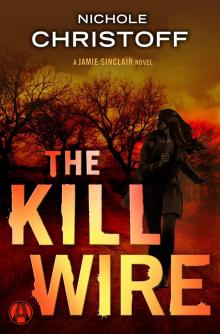 The Kill Wire
The Kill Wire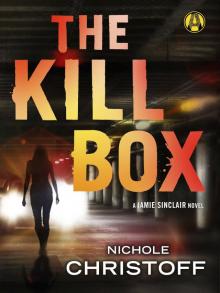 The Kill Box
The Kill Box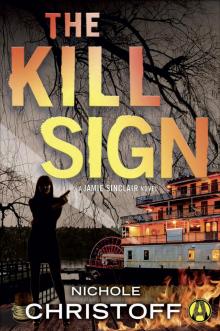 The Kill Radius
The Kill Radius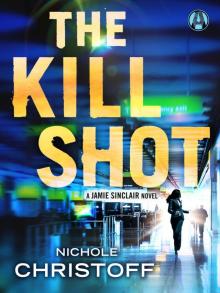 The Kill Shot
The Kill Shot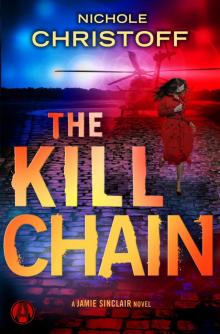 The Kill Chain
The Kill Chain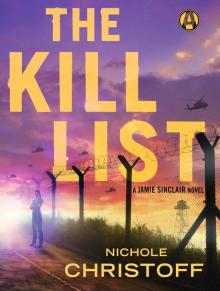 The Kill List
The Kill List